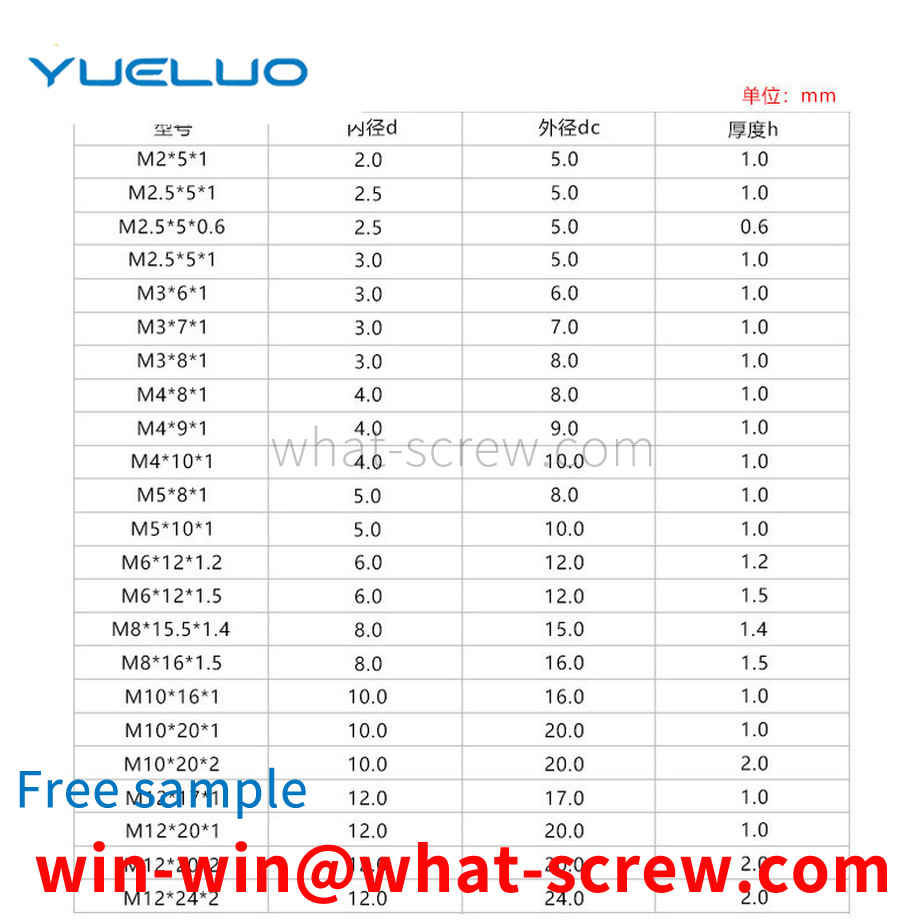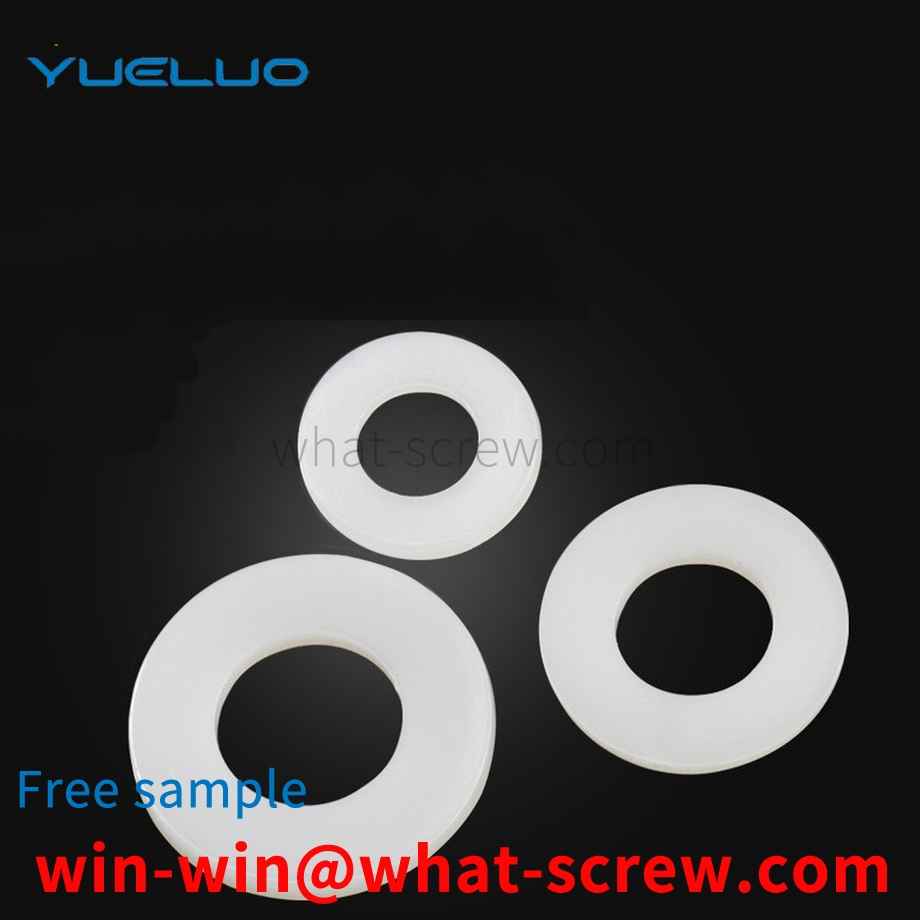screw is a common connecting piece, a tool that uses the physical and mathematical principles of the circular rotation and friction of an object to fasten the parts of the object step by step. Screws are indispensable industrial necessities in daily life: tiny screws used in cameras, glasses, clocks, electronics, etc.; general screws in televisions, electrical products, musical instruments, furniture, etc.; as for engineering, construction, and bridges, large screws are used. Screws and nuts; transportation equipment, airplanes, trams, automobiles, etc. are used together with large and small screws. Screws have important tasks in industry. As long as there is industry on earth, the function of screws will always be important. The screw is a common invention in people's production and life for thousands of years. According to the application field, it is a great invention of human beings. A traditional screw is generally set as a screw head at one end and a screw rod at the other end, which cooperates with an external nut to fasten the connector between the screw head and the nut. However, such as some home appliance modules, chassis and other electrical appliances, the modules and boxes fixed by traditional screws often fasten many parts together by screws. During maintenance, it is necessary to disassemble all parts of the maintenance part, which is very troublesome. Therefore, a new type of screw structure that can be connected at both ends and can realize layered installation is required. During maintenance, only the connecting layer of the maintenance part needs to be disassembled, and neither the exterior nor the interior needs to be disassembled.
2. Wall panel nails 1. Hardness of the heart: Standard: HRC24-45. 2. Surface hardness: Standard: HV600-800. 3. Carburized layer: 4#-6# 0.05-0.18mm, 8#-12#0.10-0.23, 14# 0.13-0.28. 4. Bending degree: the requirement is 150-450 5. Salt spray test: generally MIN 48h. 6. Torque: Specification 6#7#8#10# Torque 21283558. 3. Drilling screw 1. Hardness of the heart: Standard: HRC32-40 The actual measurement of the company's products is HRC31.7-39.0. 2. Surface hardness: Standard: HV600-700 The actual measurement of the company's products is about HV620. 3. Hard penetration layer: 4#-6#: 0.05-0.18mm 8#-12#: 0.10-0.23mm 14#: 0.15-0.28mm 4. Torque: specification, drill tail, screw, TYPE BSDTYPE CSDINCH-LBKG- CMINCH-LBKG-CM4# (2.9) 141614166# (3.5) 242824288# (4.2) 4248485510# (4.8) 6170657512# (5.5) 9210610011514# (6.3) 150173156180.
OtagoCylindrical pins are generally used to connect, lock parts or for assembly positioning, and can also be used as parts of safety devices. The cylindrical pin is fixed in the pin hole by interference fit with the pin hole to fix parts, transmit power, or act as a positioning member. The prior art cylindrical pin press-fitting is shown in Figure 1. This kind of cylindrical pin prevents the cylindrical pin body from withdrawing through the locking force and axial friction force brought by the interference fit between the cylindrical pin body and the pin hole. However, the interference of the cylindrical pin body will gradually decrease during use, so that the firmness of the connection and the positioning accuracy will gradually decrease. Therefore, the cylindrical pin can be easily withdrawn during use, resulting in potential safety hazards.
The nut specification table is to unify all kinds of nuts in detail, and use the table to subdivide some specifications of the nuts. There are many types of nuts, and there are nuts of different materials. Each type of nut has different specifications, and each type of screw also has its mechanical properties and functions. · Square nut grade C GB 39-88 · Hexagonal nut grade C GB /T41-2000 · Hexagonal thick nut GB 56-88 · Wing nut GB 62-88 · Ring nut GB 63-88 · Combined OtagoOtagoOtagocap nut GB 802 -88 · Spherical OtagoHex Nut GB 804-88 · Fastening Nut GB 805-88 Knurled High Nut GB 806-88 · Knurled Thin Nut GB 807-88 · Small Hexagonal Extra Flat Fine Thread Nut GB 808-88 · Embedded Round nut GB 809-88 · Small Otagoround nut GB 810-88 · Round nut GB 812-88 End hole Otagoround nut GB 815-88 · Side hole Otagoround nut GB 816-88 · OtagoSlotted Otagoround nut GB 817-88 · Type 1 non-metallic insert hexagonal lock nut GB /T 889.1-2000 · Type 1 non-metallic insert hexagonal lock nut with fine thread GB /T 889.2-2000 · Cap nut GB 923-88 · Type 1 hexagonal nut GB / T 6170-2000 · Type 1 Hexagonal Nuts with Fine Thread GB /T 6171-2000 · Hexagonal Thin Nuts GB /T 6172.1-2000 · Non-metallic Insert Hexagonal Locking Thin Nuts GB /T 6072.2-2000 · Hexagonal Thin Nuts with Fine Pitch GB /T 6173-2000 · Hexagonal thin nuts without chamfer GB /T 6174-2000 · Type 2 hexagon nuts GB /T 6175-2000 · Type 2 hexagon nuts with fine pitch GB /T 6176-2000 · Hexagon flange nuts GB / T 6177.1-2000 · Hexagon flange face nuts with fine pitch GB /T 6177.2-2000 · Type 1 hexagon slotted nut - Grade A and B GB 6178-86 · Type 1 hexagon slotted nut - Grade C GB 6179-86 · 2 Type Hexagonal OtagoOtagoSlotted Nuts-A and B Grades GB 6180-86 Hexagonal Slotted Thin Nuts-A and B Grades GB 6181-86 Type 2 Non-metallic Insert Hexagonal OtagoLock Nuts GB/T 6182-2000 Non-metallic Inserts Hexagon flange face lock nuts for non-metal inserts GB /T 6183.1-2000 · Non-metallic insert hexagonal flange face lock nuts with fine thread GB /T 6183.2-2000 · Type 1 all-metal hexagonal lock nuts GB /T 6184-2000 · Type 2 all-metal hexagonal lock nut GB /T 6185.1-2000 · Type 2 all-metal hexagonal lock nut fine pitch GB /T 6185.2-2000 · Type 2 all-metal hexagonal lock nut Grade 9 GB /T 6186-2000 · Full Metal Hexagon Flange Face OtagoLock Nuts GB /T 6187.1-2000 · All Metal Six Angle flange face locking nut fine pitch GB /T 6187.2-2000 · Type 1 hexagon slotted nut with fine pitch A and B grades GB 9457-88 · Type 2 hexagonal slotted nut with fine pitch A and B grade GB 9458-88 · Hexagonal Slotted Thin Nut Fine Thread Grade A and B GB 9459-88 · Welded OtagoSquare Nut GB /T 13680-92 · Welded Hexagonal Nut GB /T 13681-92 · Flat Head Rivet Nut GB /T 17880.1-1999 · Countersunk Head Rivet Nut GB /T 17880.2-1999 · OtagoSmall countersunk head OtagoOtagorivet nuts GB /T 17880.3-1999 · 120° small countersunk head OtagoOtagorivet nuts GB /T 17880.4-1999 · Flat head hexagonal OtagoOtagorivet nuts GB /T 17880.5-1999 · Hexagonal nuts for precision machinery GB /T 18195-2000
Washers (spring) washers, circlips are elastic pads or card OtagoOtagolock washers a washer that prevents bolts from loosening. The working principle of OtagoOtagolock washers is very simple. It consists of two washers. The outside is a radial relief surface, and the inside is a helical tooth surface. When assembling, the inner helical tooth surfaces are opposite each other, and the outer radial raised surface is engaged with the contact surfaces at both ends. When the connecting piece is vibrated and the bolt tends to loosen, only the inner helical tooth surfaces of the two washers are allowed to face each other. Staggered movement, resulting in lifting tension, so as to achieve 100% locking.
We have many years of experience in the production and sales of screws, nuts, flat washers, etc. The main products are: anti-loose OtagoOtagolock washers, T2 nuts, oblique large flat head bolts, 316 self-locking non-slip nuts and other products, we can provide you with suitable tightening. Firmware Solutions.



















 Service Hotline
Service Hotline




